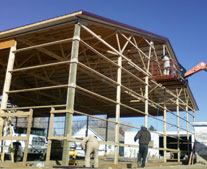A Sad Pole Barn Tale
I so like happy ending stories, however this sad pole barn tale doesn’t appear to have an immediate happy ending – although over 20 years some victims might see some or all of their hard earned money returned.
I’ve previously written about this case, however it has grown exponentially since my last article: https://www.hansenpolebuildings.com/2015/05/national-barn/.
Below a story written by Liz Evans Scolforo, for York Dispatch (www.yorkdispatch.com), and updated August 22, 2018:
A York County pole building contractor’s no-contest plea to three all-encompassing criminal counts is expected to wrap up cases here and in seven other states — with the number of victims exceeding 150, prosecutors said.
The restitution Lowell K. Thomas II will have to pay has not yet been set, but it will be higher than $500,000, chief deputy prosecutor Tim Barker said.
Between 40 and 50 of the victims are older than 60, and one is 91 years old, according to Barker and former senior deputy prosecutor Kim Kipnis, who as of this week is in private practice.
Between 2013 and 2014, Thomas took money from customers for materials and work but failed to complete the work or even provide the materials clients had paid for, according to Barker.
 Thomas, who was owner and president of National Barn Co.’s northeast division, engaged in a pattern of racketeering and deception between 2013 and ’14 that ripped off customers who contracted with his company to have pole buildings constructed, the prosecutors said.
Thomas, who was owner and president of National Barn Co.’s northeast division, engaged in a pattern of racketeering and deception between 2013 and ’14 that ripped off customers who contracted with his company to have pole buildings constructed, the prosecutors said.
His division’s headquarters was in Penn Township, officials said.
National Barn Co.’s individual divisions are privately owned, meaning the national company had no supervisory role over Thomas, according to Barker.
Firefighters, animal rescues: In addition to the elderly, Thomas’ victims included a church group, a firefighter group and animal-rescue organizations, Kipnis said.
Defense attorney Tom Kelley, who represented Thomas, declined comment.
Thomas, 45, of the 3400 block of Trone Road in Manheim Township, appeared in York County Court on Tuesday, Aug. 21, and pleaded no contest to three felony charges — being part of a corrupt organization, home-improvement fraud and theft by failure to make required disposition.
He avoided prison as part of his plea agreement and will instead spend 20 years on probation. The plea agreement mandates he not work as a building contractor in any state until his probation ends.
The prosecution agreed his probation can end after 10 years, but only if Thomas has fully paid his restitution and court costs. That gives him an incentive to repay victims more quickly, Barker said.
Thomas will have to make regular restitution payments or risk violating his probation conditions and being jailed, Barker confirmed.
The restitution will be for victims in York County as well as in other states, according to Kipnis, who said Thomas was either under investigation or charged for similar activity in New York, New Jersey, Delaware, Maryland, Ohio, Virginia and West Virginia.
Thomas’ York County victims are from Glenville, Hanover, Penn Township and Red Lion, according to Barker.
Not all of the more-than 150 victims are entitled to restitution, Barker noted.
Restitution: During Tuesday’s hearing, Barker said he will reach out to every police
department, including those outside Pennsylvania, to collect the amounts of restitution
being sought and will submit those amounts to presiding Common Pleas Judge Harry Ness.
Kelley said his client will stipulate to some of the restitution claims but is expected to challenge others.
Ness said if that happens, a hearing will be scheduled so he can hear evidence and determine the final restitution amount.
The out-of-state jurisdictions have, or said they will, drop their criminal cases against Thomas once the restitution amounts are approved, according to Barker.
It was anticipated victims would have to be flown in to testify against Thomas both here and out of state, so handling all the cases as one all-encompassing case will save taxpayers those expenses, he said.
Thomas’ three-week trial, scheduled to begin Sept. 4 in York County Court, has been canceled.
No trial: Had the case gone to trial, Thomas’ former employees were expected to testify that he took jobs knowing he couldn’t complete them, Barker said.
Also testifying would have been out-of-state victims, who the prosecution would have had to pay to fly here and put up in hotels, he said.
Barker said his office contacted the victims about the plea agreement and said they were in favor of restitution over imprisonment.
“That’s what the victims want most,” Kipnis said. “They want their money back.”
Barker said that if the plea agreement hadn’t come together, “We’ve been hunkered down and ready for (trial).”
‘Highly unusual’: He called it “highly unusual” for multiple cases in different states to be handled as one large case in a county court of common pleas.
“Many times, these are federal cases,” he said.
Defendants who plead no contest aren’t admitting guilt. Rather, they are acknowledging that there’s enough evidence to convict them at trial.
Otherwise, a no-contest plea has the same effect as a guilty plea.
Mike the Pole Barn Guru comments:
Gentle readers, I implore you to thoroughly vet out any potential post frame (pole barn) building supplier or contractor (including us). Don’t become a victim waiting 20 years (or forever) for restitution.
How to check out pole building suppliers: https://www.hansenpolebuildings.com/2015/01/pole-building-suppliers/
And builders: https://www.hansenpolebuildings.com/2013/07/contractor-6/
 As a member of most every active barndominium group in the social media world, I read all too often how new or prospective barndominium owners proudly proclaim they are or will be building where Building Codes are not enforced.
As a member of most every active barndominium group in the social media world, I read all too often how new or prospective barndominium owners proudly proclaim they are or will be building where Building Codes are not enforced. Your new building kit is designed for an average physically capable person, who can and will read and follow instructions, to successfully construct your own beautiful building shell, without extensive prior construction knowledge (and most of our clients do DIY – saving tens of thousands of dollars). We’ve had clients ranging from septuagenarians to fathers bonding with their teenage daughters erect their own buildings, so chances are – you can as well!
Your new building kit is designed for an average physically capable person, who can and will read and follow instructions, to successfully construct your own beautiful building shell, without extensive prior construction knowledge (and most of our clients do DIY – saving tens of thousands of dollars). We’ve had clients ranging from septuagenarians to fathers bonding with their teenage daughters erect their own buildings, so chances are – you can as well! MYTH #4 I NEED TO HIRE A BUILDER FIRST, BEFORE I DO ANYTHING
MYTH #4 I NEED TO HIRE A BUILDER FIRST, BEFORE I DO ANYTHING bonding with their teenage daughters erect their own buildings, so chances are – you can as well!
bonding with their teenage daughters erect their own buildings, so chances are – you can as well!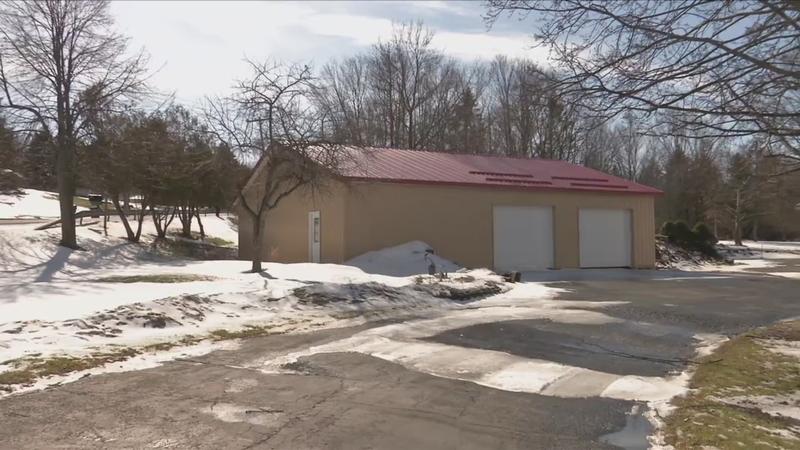
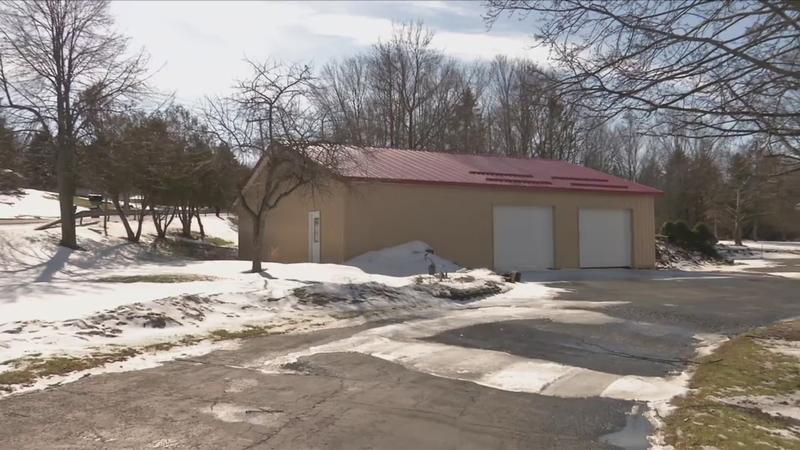
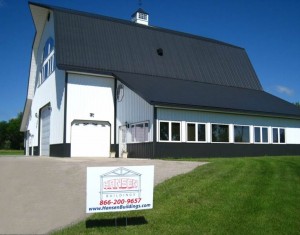 Your new building investment includes full multi-page 24” x 36” structural blueprints detailing location and attachment of every piece (as well as suitable for obtaining Building Permits), our industry’s best, fully illustrated, step-by-step installation manual, and unlimited technical support from people who have actually built post frame buildings. Even better – it includes our industry leading Limited Lifetime Structural warranty!
Your new building investment includes full multi-page 24” x 36” structural blueprints detailing location and attachment of every piece (as well as suitable for obtaining Building Permits), our industry’s best, fully illustrated, step-by-step installation manual, and unlimited technical support from people who have actually built post frame buildings. Even better – it includes our industry leading Limited Lifetime Structural warranty! Contractors generally have no qualms about using leftover materials from prior jobs, or purchasing cheaper materials than specified. If you seriously are concerned about material quality, take control yourself. Be aware, when contractors purchase materials for your building, they will mark them up. Paying for materials yourself assures you of not having liens against your property for bills your contractor did not pay.
Contractors generally have no qualms about using leftover materials from prior jobs, or purchasing cheaper materials than specified. If you seriously are concerned about material quality, take control yourself. Be aware, when contractors purchase materials for your building, they will mark them up. Paying for materials yourself assures you of not having liens against your property for bills your contractor did not pay. Hiring a contractor? Then, standards for workmanship should be clearly specified. For post-frame buildings this would be Construction Tolerance Standards for Post-Frame Buildings (ASAE Paper 984002) and Metal Panel and Trim Installation Tolerances (ASAE Paper 054117). Depending upon scope of work, other standards may apply such as ACI (American Concrete Institute) 318, ACI Concrete Manual and APA guidelines (American Plywood Association).
Hiring a contractor? Then, standards for workmanship should be clearly specified. For post-frame buildings this would be Construction Tolerance Standards for Post-Frame Buildings (ASAE Paper 984002) and Metal Panel and Trim Installation Tolerances (ASAE Paper 054117). Depending upon scope of work, other standards may apply such as ACI (American Concrete Institute) 318, ACI Concrete Manual and APA guidelines (American Plywood Association).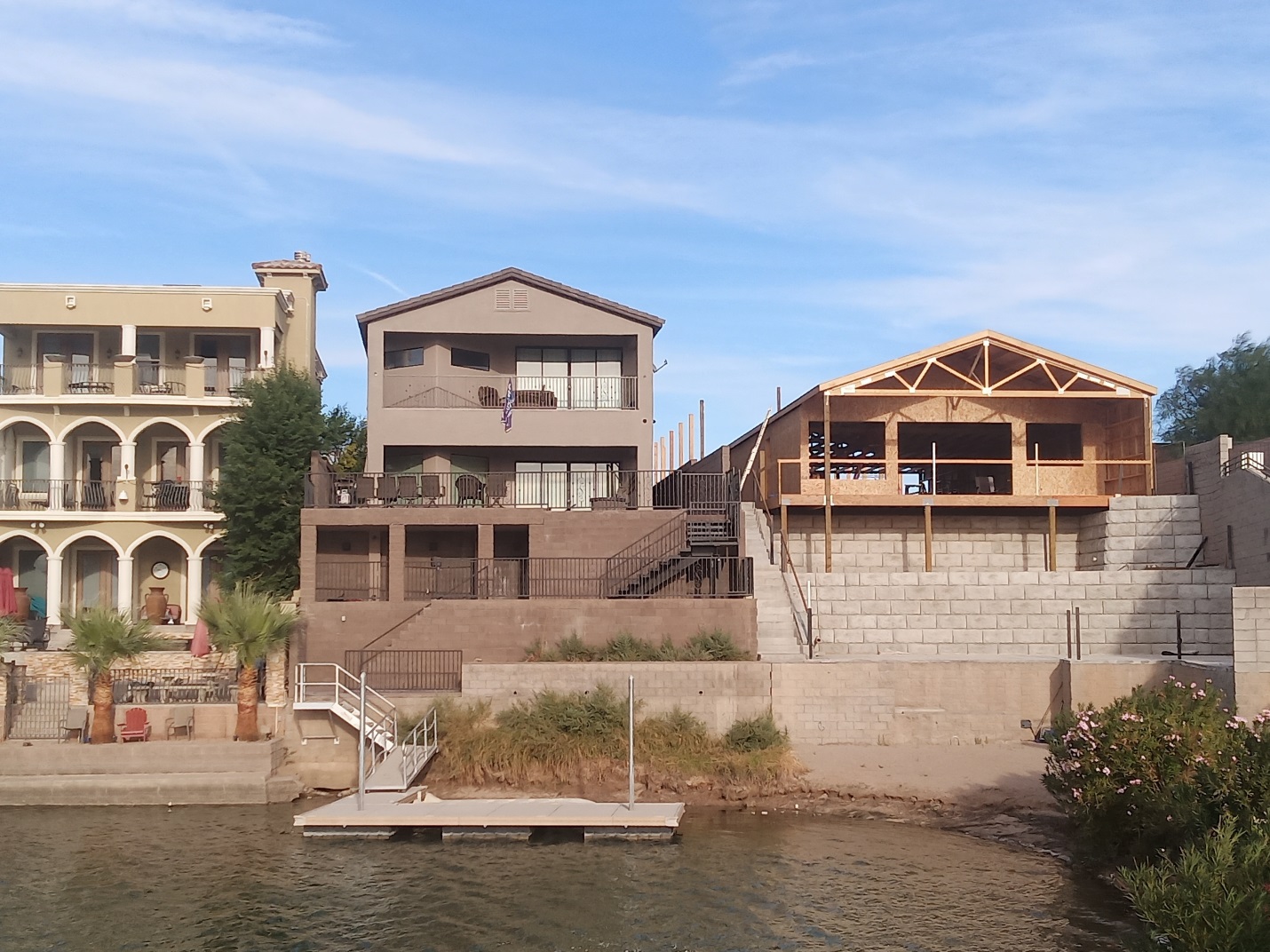
 Now let them work. Don’t try to supervise every blow of a hammer or placement of every stud. These guys are professionals and they know more about their trades than you do, and probably, if they came to you well recommended, they take pride in their work. Let them do it.
Now let them work. Don’t try to supervise every blow of a hammer or placement of every stud. These guys are professionals and they know more about their trades than you do, and probably, if they came to you well recommended, they take pride in their work. Let them do it.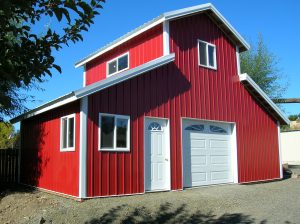 Never accept a bid “by the hour.” It doesn’t work. Remember Murphy’s Law; “If you want to see how long a job can take, pay someone by the hour.” You may pay a little more for a fixed price bid, but it’s worth it for peace of mind.
Never accept a bid “by the hour.” It doesn’t work. Remember Murphy’s Law; “If you want to see how long a job can take, pay someone by the hour.” You may pay a little more for a fixed price bid, but it’s worth it for peace of mind. Utilities must be connected. Exactly who is responsible for running water lines, sewer lines, and electrical hookups will vary with each subcontractor involved. Get responsibility pinned down when you are hiring subs, then follow through to be sure it is done properly.
Utilities must be connected. Exactly who is responsible for running water lines, sewer lines, and electrical hookups will vary with each subcontractor involved. Get responsibility pinned down when you are hiring subs, then follow through to be sure it is done properly.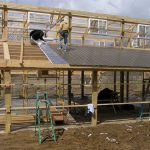
 I do not trust contractors to buy materials for me. Contractors generally have no qualms about using leftover materials from prior jobs, or purchasing cheaper materials than specified. If you seriously are concerned about material quality, take control yourself. Be aware, when contractors purchase materials for your barndominium, they will mark them up. Paying for materials yourself assures you of not having liens against your property for bills your contractor did not pay.
I do not trust contractors to buy materials for me. Contractors generally have no qualms about using leftover materials from prior jobs, or purchasing cheaper materials than specified. If you seriously are concerned about material quality, take control yourself. Be aware, when contractors purchase materials for your barndominium, they will mark them up. Paying for materials yourself assures you of not having liens against your property for bills your contractor did not pay. Seemingly millions of canned house plans are available (for a small to large fee) across a plethora of internet websites. 99.9% of these plans have a similar problem – they were designed for a flat lot in suburbia! Yep, they look stunning on a website. Considering spending your hard earned money on one thinking you will save money by using cheap house plans? This would be an equivalent to everyone buying 34 inch waist 36 inch inseam Levi’s. They fit me just fine, but what if you are not 6’5”? Or maybe you do not even like Levi’s?
Seemingly millions of canned house plans are available (for a small to large fee) across a plethora of internet websites. 99.9% of these plans have a similar problem – they were designed for a flat lot in suburbia! Yep, they look stunning on a website. Considering spending your hard earned money on one thinking you will save money by using cheap house plans? This would be an equivalent to everyone buying 34 inch waist 36 inch inseam Levi’s. They fit me just fine, but what if you are not 6’5”? Or maybe you do not even like Levi’s?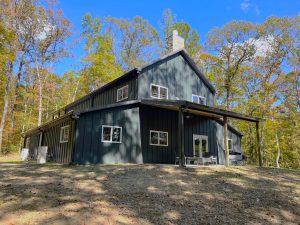
 Building Codes are a bare minimum standard. Their main focus is on Life/Safety/Hygiene issues and limited structural capacity. Code is not quality. I know of no tradesperson who would build anything for themselves merely “to code.” Building standards are written to protect occupants for a limited time during catastrophic events. It is assumed all structures will be partially, if not completely damaged.
Building Codes are a bare minimum standard. Their main focus is on Life/Safety/Hygiene issues and limited structural capacity. Code is not quality. I know of no tradesperson who would build anything for themselves merely “to code.” Building standards are written to protect occupants for a limited time during catastrophic events. It is assumed all structures will be partially, if not completely damaged.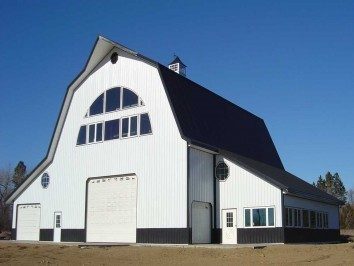 Finding skilled craftsman who are willing to travel to our location ranged from difficult to impossible. Few were interested in a jaunt of 60 miles from Watertown or 100 miles from Fargo. Those who would travel charged extra to compensate for driving time and distance. Transporting building materials and paying for delivery costs more than building near a major city.
Finding skilled craftsman who are willing to travel to our location ranged from difficult to impossible. Few were interested in a jaunt of 60 miles from Watertown or 100 miles from Fargo. Those who would travel charged extra to compensate for driving time and distance. Transporting building materials and paying for delivery costs more than building near a major city.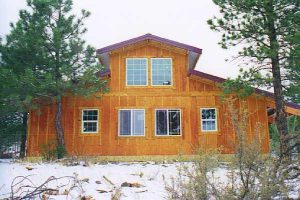 Barndominiums, shouses and post frame homes all fit into a similar category to me. This category heading would be titled, “Living in a Post Frame Building”, although other construction types may be used, post frame is going to give most bang for your investment.
Barndominiums, shouses and post frame homes all fit into a similar category to me. This category heading would be titled, “Living in a Post Frame Building”, although other construction types may be used, post frame is going to give most bang for your investment.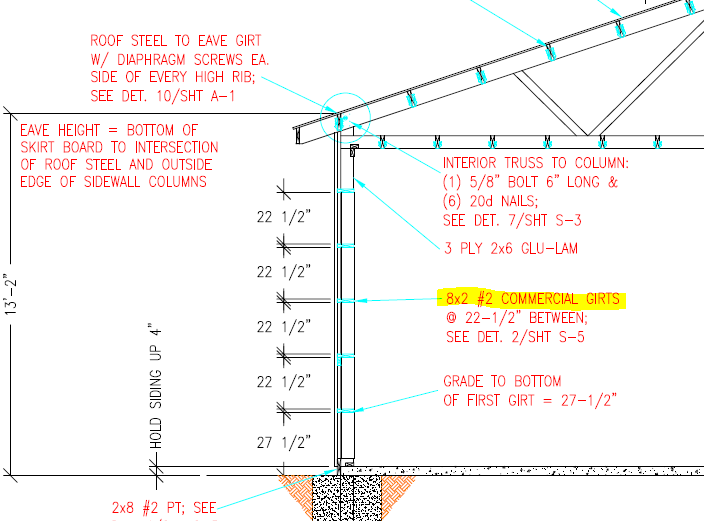
 Thomas, who was owner and president of National Barn Co.’s northeast division, engaged in a pattern of racketeering and deception between 2013 and ’14 that ripped off customers who contracted with his company to have pole buildings constructed, the prosecutors said.
Thomas, who was owner and president of National Barn Co.’s northeast division, engaged in a pattern of racketeering and deception between 2013 and ’14 that ripped off customers who contracted with his company to have pole buildings constructed, the prosecutors said. Why a builder would do this totally baffles me, as stitch screws are not any less expensive (at least not good ones). Of course this building is over a year old, so the builder does not have to do anything about it, by statue!
Why a builder would do this totally baffles me, as stitch screws are not any less expensive (at least not good ones). Of course this building is over a year old, so the builder does not have to do anything about it, by statue! In both cases, Oldfield allegedly gave quotes for two separate pole barn construction jobs and requested a deposit for each job. Both victims wrote a check for the deposit and Oldfield kept the money. After taking the funds, he cut off all contact with the victims, and failed to deliver construction of the pole barns.
In both cases, Oldfield allegedly gave quotes for two separate pole barn construction jobs and requested a deposit for each job. Both victims wrote a check for the deposit and Oldfield kept the money. After taking the funds, he cut off all contact with the victims, and failed to deliver construction of the pole barns.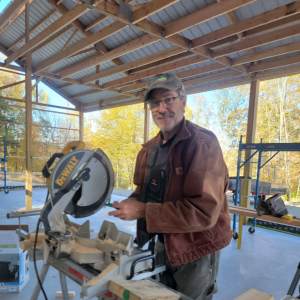 “He took the money and didn’t do a thing,” Van Norman said. “In one of them, a subcontractor came out and prepped the site but after that, nothing happened. At another job, he ordered materials and the materials were delivered to the site, but they sat there forever, to the point where some of them were weathered to the point of being unusable.”
“He took the money and didn’t do a thing,” Van Norman said. “In one of them, a subcontractor came out and prepped the site but after that, nothing happened. At another job, he ordered materials and the materials were delivered to the site, but they sat there forever, to the point where some of them were weathered to the point of being unusable.”
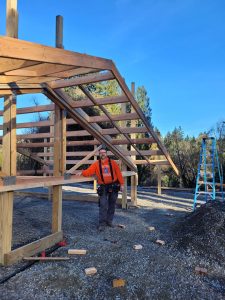 Hansen Pole Buildings is a supplier and a supplier only. We do not construct buildings anywhere for anyone – even ourselves. Our new post frame building addition of 30 feet x 96 feet is being contracted out to a technician, who happens to do erection work for several of our clients. When you order your new post frame building from us this is clearly reiterated in writing and approved by you:
Hansen Pole Buildings is a supplier and a supplier only. We do not construct buildings anywhere for anyone – even ourselves. Our new post frame building addition of 30 feet x 96 feet is being contracted out to a technician, who happens to do erection work for several of our clients. When you order your new post frame building from us this is clearly reiterated in writing and approved by you:

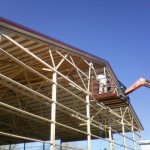
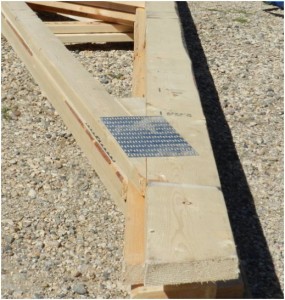

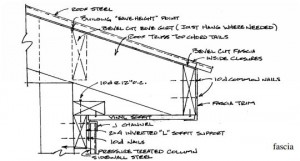
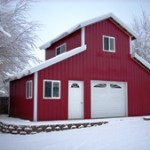 Winter weather can prove to be ugly.
Winter weather can prove to be ugly.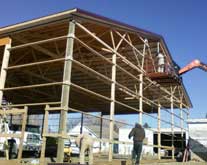 In today’s episode of “How the Stomach Churns” we find Builder Bob (the name has been changed to protect those who probably don’t read my articles anyhow) industriously working away in the wilds of Colorado – where he determines the sidewall steel above a sliding door is four inches too short!
In today’s episode of “How the Stomach Churns” we find Builder Bob (the name has been changed to protect those who probably don’t read my articles anyhow) industriously working away in the wilds of Colorado – where he determines the sidewall steel above a sliding door is four inches too short! The phenomenon was first tested in a series of experiments published in 1999 by David Dunning and Justin Kruger of the Department of Psychology, Cornell University. The study was inspired by the case of McArthur Wheeler, a man who robbed two banks after covering his face with lemon juice in the mistaken belief, as lemon juice is usable as invisible ink, it would prevent his face from being recorded on surveillance cameras. They noted earlier studies suggested ignorance of standards of performance lies behind a great deal of incorrect self assessments of competence. This pattern was seen in studies of skills as diverse as reading comprehension, operating a motor vehicle, and playing chess or tennis.
The phenomenon was first tested in a series of experiments published in 1999 by David Dunning and Justin Kruger of the Department of Psychology, Cornell University. The study was inspired by the case of McArthur Wheeler, a man who robbed two banks after covering his face with lemon juice in the mistaken belief, as lemon juice is usable as invisible ink, it would prevent his face from being recorded on surveillance cameras. They noted earlier studies suggested ignorance of standards of performance lies behind a great deal of incorrect self assessments of competence. This pattern was seen in studies of skills as diverse as reading comprehension, operating a motor vehicle, and playing chess or tennis. DEAR POLE BARN GURU: I have some serious issues with a pole barn I recently had built! I hired a general contractor to build it for me knowing it would be a little more expensive but that way if there was any issues it was his responsibility to deal with subcontractors. Well it’s been a nightmare ever since the sub he hired to construct it didn’t set the man door at the right height so when the concrete crew poured the floor they went off the bottom of the man door instead of the garage doors which is the proper way to do it. Well when they went to do the apron they discovered the siding was three inches below where the concrete had to be so they had to cut the wainscot three inches. I decided to start taking measurements! This is a 30×40 building and none of the posts are on center. They are anywhere from 16 inches off to 2 inches off center on an 8 foot span. The roof joists are supposed to be 4 foot span but they are all over the place too! Anyway he’s trying to tell this is ok it’s still structurally sound and I shouldn’t worry about it! Anyway you get the picture. He wants his money and I am refusing to give final payment till I get another contractor to look at it and give me a cost estimate to fix the problems his sub screwed up on. What’s your thoughts on the way I’m handling it? CONFOUNDED IN CABLE
DEAR POLE BARN GURU: I have some serious issues with a pole barn I recently had built! I hired a general contractor to build it for me knowing it would be a little more expensive but that way if there was any issues it was his responsibility to deal with subcontractors. Well it’s been a nightmare ever since the sub he hired to construct it didn’t set the man door at the right height so when the concrete crew poured the floor they went off the bottom of the man door instead of the garage doors which is the proper way to do it. Well when they went to do the apron they discovered the siding was three inches below where the concrete had to be so they had to cut the wainscot three inches. I decided to start taking measurements! This is a 30×40 building and none of the posts are on center. They are anywhere from 16 inches off to 2 inches off center on an 8 foot span. The roof joists are supposed to be 4 foot span but they are all over the place too! Anyway he’s trying to tell this is ok it’s still structurally sound and I shouldn’t worry about it! Anyway you get the picture. He wants his money and I am refusing to give final payment till I get another contractor to look at it and give me a cost estimate to fix the problems his sub screwed up on. What’s your thoughts on the way I’m handling it? CONFOUNDED IN CABLE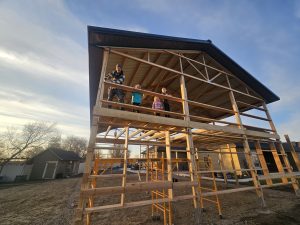 Below is an actual email from a potential client. These were the kind of folks who put huge smiles (all of the way to the bank) on my face when I was a pole building contractor!
Below is an actual email from a potential client. These were the kind of folks who put huge smiles (all of the way to the bank) on my face when I was a pole building contractor!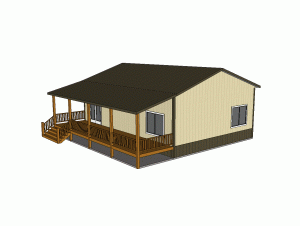 Rick related to me this from the client:
Rick related to me this from the client: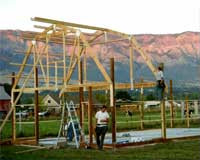
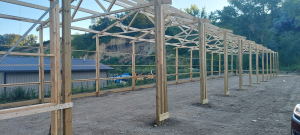 Sometimes what they say seems completely obvious to them, but makes no sense to you. Of course most of what I say seems completely obvious to me, but makes no sense to my darling bride either.
Sometimes what they say seems completely obvious to them, but makes no sense to you. Of course most of what I say seems completely obvious to me, but makes no sense to my darling bride either.
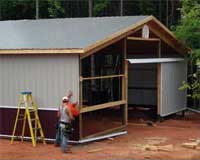 Remember those hours the general contractor will save you on the jobsite? Plan on spending twice the amount of time to find a good general contractor. Do your due diligence and hire someone with excellent references and the professionalism to do what he was hired to do.
Remember those hours the general contractor will save you on the jobsite? Plan on spending twice the amount of time to find a good general contractor. Do your due diligence and hire someone with excellent references and the professionalism to do what he was hired to do.